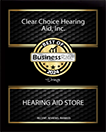
When it comes to history, there are three distinct kinds of people: people who find history to be incredibly interesting, individuals who think history is horribly dull, and those who believe history is full of aliens.
Aliens aren’t behind the history of hearing aids. But the true story is probably pretty strange too. After all, hearing loss isn’t really a new thing; it’s been around as long as we have. People have, consequently, been attempting to discover new effective ways to cope with hearing loss since the beginning of our existence.
An appreciation for your incredible little digital devices, their features, and why it’s important to wear them, can be gained by discovering a bit of history about them.
Hearing loss has existed for thousands of years
Archaeologists have discovered evidence of hearing loss that goes back to the dawn of mankind. They can detect signs of ear pathologies in fossil evidence. It’s pretty cool! Mentions of hearing loss also start showing up as soon as written language is created (for instance, there are numerous Egyptian sources that mention hearing loss symptoms).
Which is to say, hearing loss isn’t new. And it wasn’t any better then than it is now (this is especially true because it was harder to treat then). When you have neglected hearing loss, you will find it more difficult to communicate. You might lose touch with friends and family members. When humans were a little more primitive, untreated hearing loss could result in a shorter lifespan as they may not have been able to detect danger.
So going back thousands of years, humans have had an incentive to learn how to treat hearing loss. And they’ve even managed some terrific successes!
A timeline of hearing aid-type devices
It’s important to mention that we don’t have an exhaustive history of the hearing aid. Not all evidence of hearing devices is recorded through time. It’s likely that ancient humans did something to alleviate hearing loss, even if there’s no direct evidence of what that was.
But here’s what we do know about the known hearing aid timeline:
- 1200s: Animal Horns: Some of the earliest known proto-hearing aids were hollowed-out animal horns. People probably used this device to amplify sound and lessen the effect of hearing loss and evidence of this sort of device dates back to the 1200s. The concept was that the funnel-shape of a hollowed out animal bone would help conduct sound more directly into the ear. There was no amplification used, so these animal horns weren’t functioning on the same level as a modern hearing aid (obviously). But they most likely help focus the sound you want to hear and control distracting outside sounds.
- 1600s: Ear Trumpet: For centuries, the “cone shaped” hearing apparatus was the prominent format. And that continued into the seventeenth century, when “ear trumpets” became a desirable means of managing hearing loss. These contraptions looked, well, like trumpets. The small end would go inside your ear. They came in a large number of shapes and materials. The early models were quite large and awkward. Eventually, more portable models that could be carried around with you were created. Because there was still no amplification, they were about as efficient as the bigger versions. But they could bring sound more directly to your ear.
- 1900s: Electronic Amplification: In the late 1800s, the carbon microphone was invented but wouldn’t be implemented into hearing aid technology until early the 1900s. Their ability to amplify should have made hearing aids reliable and practical, right? Well, not so much. As of the early 1900s these devices were too large to be realistic or wearable. The base principle was there, but the technology wasn’t refined enough to be truly practical.
- 1920s: Wearable Hearing Devices: Hello, vacuum tubes! At one point, believe it or not, those vacuum tubes that powered those bulky television sets were cutting edge technology. These vacuum tubes permitted (relatively) smaller, wearable hearing aids to be manufactured, the size of a backpack. New technologies also allowed better amplification and slightly clearer sound.
- 1940s: Pocket-Sized Hearing Aids: It’s a huge leap from a backpack sized hearing aid to a purse or pocket sized one. This was because of the invention of the transistor, which meant you required less technological bulk to accomplish the same impact. As a result of this advancement, people could conveniently take hearing aids with them wherever they went, it was a significant benefit!
- 1970s and 1980s: Hearing Aids Get Smaller: Hearing aids became smaller as technology advanced. Hearing aids got significantly smaller in the 1970s and 80s. This made them simpler to use, and more popular. The amplification, unfortunately, was still very basic. They just boosted all of the sound they picked up. It was better than nothing, but still not really what most people required to successfully treat their hearing loss.
- 1982: Digital Hearing Aid: While not fully adopted and commercially introduced until 1996, 1982 was the year of the first digital hearing aid. Digital hearing aids were a game changer, they provided a better sound quality, more ways to personalize amplification, and the ability to put everything into a more discrete package. Treatment for hearing loss has become more effective since the evolution of digital hearing aid.
- 2000s (and Beyond): Hearing Aids Get Wireless and Smart: An increasing amount of state-of-the-art technology has been put into these digital hearing aids since they were developed. This began with Bluetooth wireless connectivity. And currently, modern hearing aids will use machine learning algorithms to help you hear better than ever. Hearing aids are more convenient and more efficient as a result of this integration with other technologies.
The best hearing aids in history
For centuries or more, we have been working on relieving hearing loss.
Modern hearing aids can accomplish that better than at any point in human history. These little pieces of technology are more popular than they ever have been because they’re so effective. A broad range of hearing problems can be addressed.
So if you want to get back to connecting with your children or your loved ones or the cashier at the checkout lane, hearing aids can help you do it. (See? No aliens involved.)
Find out how hearing aids can improve your life. Call us for an appointment.
References
https://hearinghealthfoundation.org/blogs/hearing-aid-history-ear-trumpets-european-royalty-earbuds
https://www.hear-it.org/lighter-smaller-and-better










